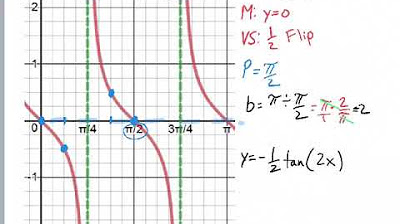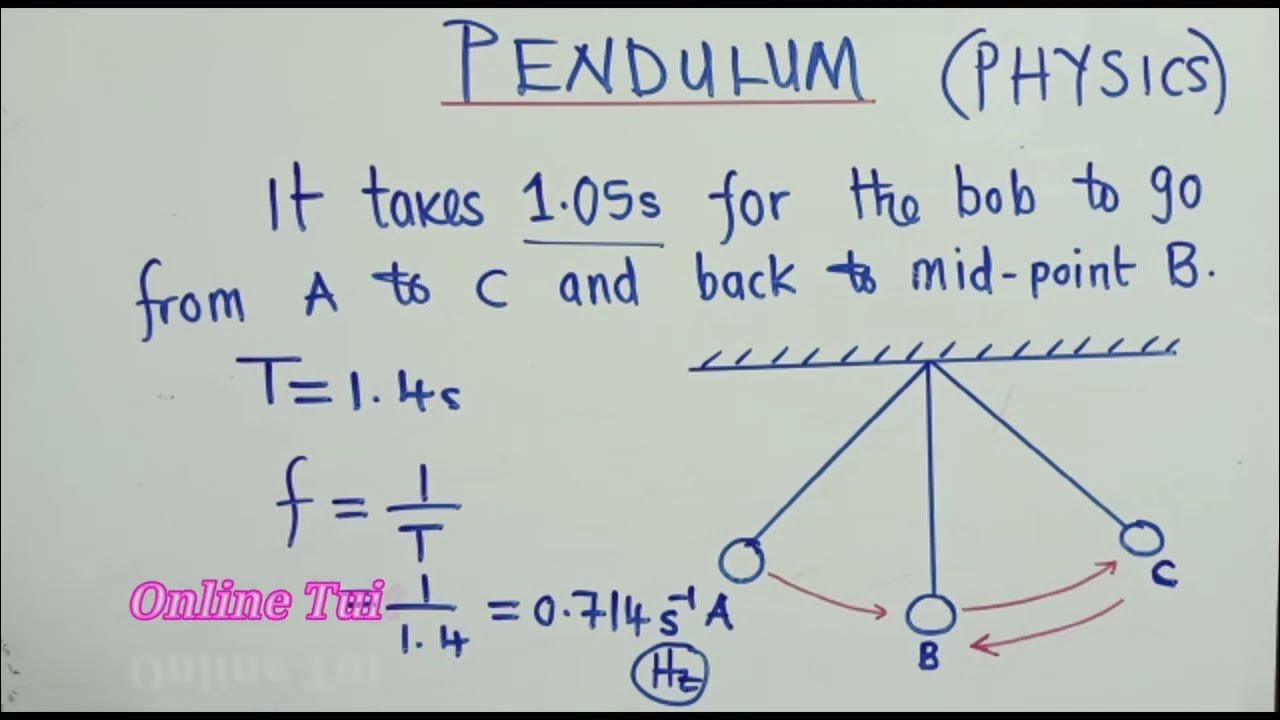HTPIB18M Calculating Period and Voltage on an Oscilloscope
TLDRThe video provides a step-by-step guide on how to measure key parameters using an oscilloscope, including the period, frequency, and peak voltage of waveforms. It explains how to properly set the oscilloscope to get accurate readings by centering the trace and counting divisions on the screen. The instructor demonstrates calculating the period by counting divisions between waveform peaks and then using this to find the frequency. Additionally, the video covers how to determine peak voltage by counting divisions on the vertical axis and applying the volts per division setting.
Takeaways
- 🔬 The video explains how to take measurements using an oscilloscope by counting divisions and adjusting dials.
- 📉 The trace on the oscilloscope is centered on the zero voltage line, and adjustments can be made using the position knob.
- ⏳ The period of a waveform can be measured by counting the divisions from peak to peak.
- 📏 The period for the first example is 3 divisions at 0.5 milliseconds per division, resulting in a period of 1.5 milliseconds.
- 📊 The frequency is calculated as the reciprocal of the period, yielding a frequency of approximately 666.67 Hz.
- 🔋 The peak voltage is determined by counting the vertical divisions and multiplying by the volts per division setting.
- 📐 In the second example, the period is 3.3 divisions at 1 millisecond per division, resulting in a period of 3.3 milliseconds and a frequency of approximately 303 Hz.
- 🔍 The third example shows a period of 5 divisions at 2 milliseconds per division, with a period of 0.01 seconds and a frequency of 100 Hz.
- ⚡ The fourth example has a peak voltage of 1.8 divisions at 1 volt per division, resulting in 1.8 volts.
- 🔧 The video emphasizes the importance of proper calibration and measurement techniques to accurately determine waveform characteristics.
Q & A
How do you ensure the oscilloscope trace is centered on the zero voltage line?
-To center the oscilloscope trace on the zero voltage line, you flip the switch to ground and adjust the position knob until the trace reads zero. Then, flip it back to AC and fine-tune the position knob if needed.
What is the period of a waveform, and how can it be measured using an oscilloscope?
-The period of a waveform is the amount of time from one peak to the next. It can be measured by counting the number of divisions between two peaks on the oscilloscope screen and multiplying by the time per division setting.
How is the frequency of a waveform calculated from its period?
-The frequency of a waveform is calculated by taking the reciprocal of its period. If the period is 0.0015 seconds, the frequency is 1/0.0015, which equals approximately 666.67 Hz.
What is the peak voltage of a waveform, and how is it measured?
-The peak voltage of a waveform is the maximum voltage it reaches. It is measured by counting the number of vertical divisions from the center line to the peak and multiplying by the voltage per division setting.
If a waveform's period is 3 divisions and the time per division is 0.5 milliseconds, what is the period in seconds?
-The period is 3 divisions times 0.5 milliseconds per division, which equals 1.5 milliseconds or 0.0015 seconds.
For a waveform with a period of 0.0015 seconds, what is its frequency?
-The frequency is the reciprocal of the period. Therefore, 1/0.0015 seconds equals approximately 666.67 Hz.
How do you measure the peak voltage if the vertical axis is set to 5 volts per division and the waveform reaches 2 divisions from the center?
-The peak voltage is 2 divisions times 5 volts per division, which equals 10 volts.
If a waveform spans 3.3 divisions and each division represents 1 millisecond, what is the period in seconds?
-The period is 3.3 divisions times 1 millisecond per division, which equals 3.3 milliseconds or 0.0033 seconds.
What is the frequency of a waveform with a period of 0.0033 seconds?
-The frequency is 1/0.0033 seconds, which equals approximately 303 Hz.
If the vertical setting is 2 volts per division and the waveform peak reaches 3 divisions, what is the peak voltage?
-The peak voltage is 3 divisions times 2 volts per division, which equals 6 volts.
Outlines
📊 Measuring Period and Voltage Using an Oscilloscope
In this segment, the process of obtaining measurements from an oscilloscope is explained. The video shows how to read the number of divisions on the oscilloscope dials to determine the period and voltage. It starts by centering the trace at zero voltage and adjusting it using the ground and AC settings. The period is measured by counting divisions between peaks and multiplying by the time per division. For example, with 3 divisions and a setting of 0.5 milliseconds per division, the period is calculated as 1.5 milliseconds. The frequency is then derived by taking the reciprocal of the period. Similarly, the peak voltage is measured by counting vertical divisions and multiplying by the voltage per division, such as 2 divisions at 5 volts per division resulting in 10 volts peak voltage.
📈 Calculating Period and Frequency for Another Waveform
This part covers the measurement of a different waveform's period and peak voltage. The period is calculated from the number of divisions (3.3 divisions) multiplied by the time per division (1 millisecond), resulting in 3.3 milliseconds. The frequency is found by taking the reciprocal of the period, yielding approximately 303 Hz. The peak voltage is determined by counting vertical divisions and multiplying by the voltage per division, in this case, 3 divisions at 2 volts per division, resulting in 6 volts.
Mindmap
Keywords
💡Oscilloscope
💡Divisions
💡Zero Voltage
💡Period
💡Frequency
💡Peak Voltage
💡Milliseconds
💡Volts per Division
💡Time per Division
💡Trace
Highlights
Introduction to getting measurements off an oscilloscope by reading the number of divisions and dials.
Centering the trace about the zero voltage line for accurate measurements.
Flipping to ground to check zero voltage and adjusting position knob for accurate centering.
Reading the period from peak to peak by measuring the divisions on the oscilloscope.
Example: Period is measured as three divisions, each division set at 0.5 milliseconds, resulting in a period of 1.5 milliseconds.
Calculating frequency as the inverse of the period, resulting in 666.666 Hz for the given example.
Measuring peak voltage by counting the divisions and multiplying by the volts per division setting.
Example: Peak voltage is measured as 2 divisions, each division set at 5 volts, resulting in a peak voltage of 10 volts.
Second example: Period measured as 3.3 divisions, each division set at 1 millisecond, resulting in a period of 3.3 milliseconds.
Calculating frequency for the second example, resulting in approximately 303 Hz.
Measuring peak voltage for the second example as 6 volts.
Third example: Period measured as 5 divisions, each division set at 2 milliseconds, resulting in a period of 0.01 seconds.
Calculating frequency for the third example, resulting in 100 Hz.
Measuring peak voltage for the third example as 3 volts.
Final example: Period measured as 3.3 divisions, each division set at 2 milliseconds, resulting in a period of 0.0066 seconds.
Calculating frequency for the final example, resulting in approximately 151.515 Hz.
Measuring peak voltage for the final example as 1.8 volts.
Transcripts
Browse More Related Video
5.0 / 5 (0 votes)
Thanks for rating:





